Coffee, do you love it or hate it? It’s been the classic pick-me-up for centuries.
Coffee is such a huge part of European culture. Not just for drinking quickly, it’s at the center of most social events. I’ve actually met very few Europeans who don’t drink and love coffee!
In Europe, you will most likely get invited over for coffee to someone’s home, either at 11:00 in the morning, or 8:00 at night. Every evening party in most of Europe begins with coffee and sweets, then moves on to champagne and drinks later.
During our antique buying trip abroad last October, I was again reminded that in Europe, coffee time is a time for enjoyment as well as socialization. Our antique buying guide/translater told me she just couldn’t understand why Americans get a coffee “to go” – “what is the point of drinking coffee if you are walking around and can’t savor it?” she asked me.
{While there, she took the time to drink quite a few espresso shots a day from the tiniest – although paper – cups….but always while standing in the coffee bar and talking to us or others at the antique shows!}

As promised, I’ll explain how to make proper French coffee in an antique enamelware Biggin later on. It really does make delicious coffee, but can be quite strong! I’ve had coffee in France that you could stand a spoon straight up in! {not really, but oh my. There is a reason some French people drink the lait in their coffee!}
It’s why they use the French bol or cafe au lait bowl, wide enough so that the delicious aroma of the coffee can be enjoyed, and large enough to add quite a good amount of milk in the mornings.
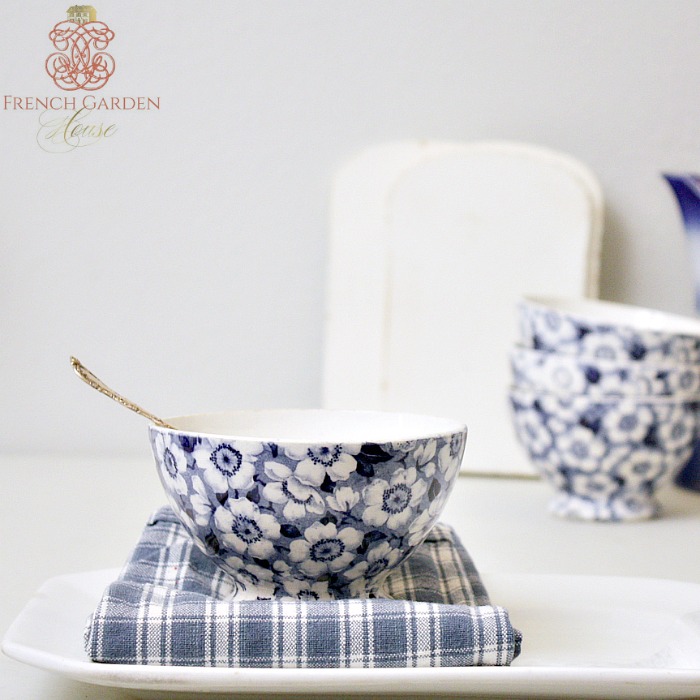 Antique Blue & White Maastricht Bol
Antique Blue & White Maastricht Bol
The French and coffee have a long standing love affair. The very first public cafe in Paris was Café Procope, which opened in 1686, and it’s still there, you can find it on 13 rue de l’Ancienne Comédie. A café where fashionable gentlemen could drink coffee, the clientele was a mix of fine young gentlemen, savants {scholars}, gossip columnists and intellectuals. When the Comédie Française was established across the street in 1689 the Procope became known as the “theatrical” café.
Throughout the 18th century, Procope was the place anyone and everyone in the intellectual society {men only!} met and drank lots and lots of coffee. Some of the better known Procope visitors included Voltaire {who is reported have drunk 40 {!!} cups of coffee per day mixed with chocolate}, Benjamin Franklin, Thomas Jefferson and John Paul Jones.
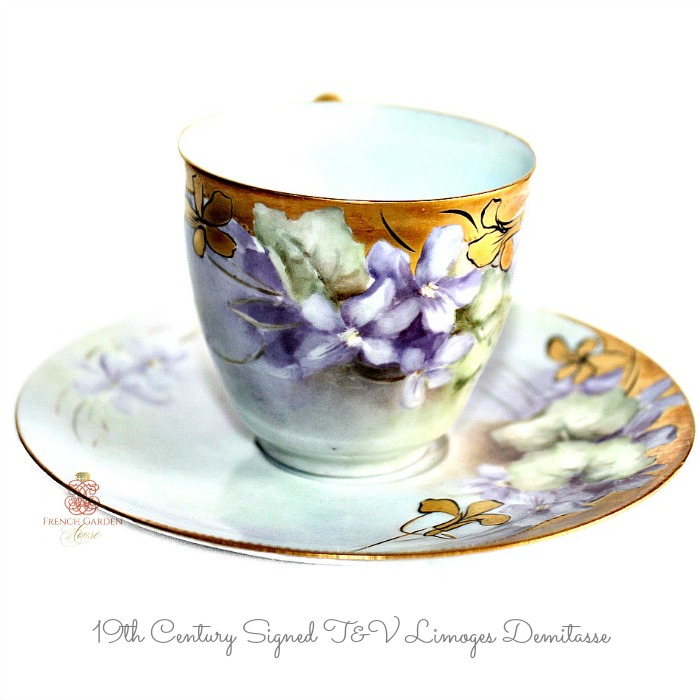 Antique Hand Painted Limoges Demitasse Cup
Antique Hand Painted Limoges Demitasse Cup
Not to be left behind, the ladies of entertained “at home” and served coffee in delicate, hand painted cups. Coffee was so much a part of the French culture, that the well known luxury porcelain producers such as Sevres and Limoges produced beautiful, hand made and extremely costly demitasse size cups.
Small cups like this showed the wealth of the ladies who served coffee to their guests, each hand painted cup was a true work of art in miniature form.
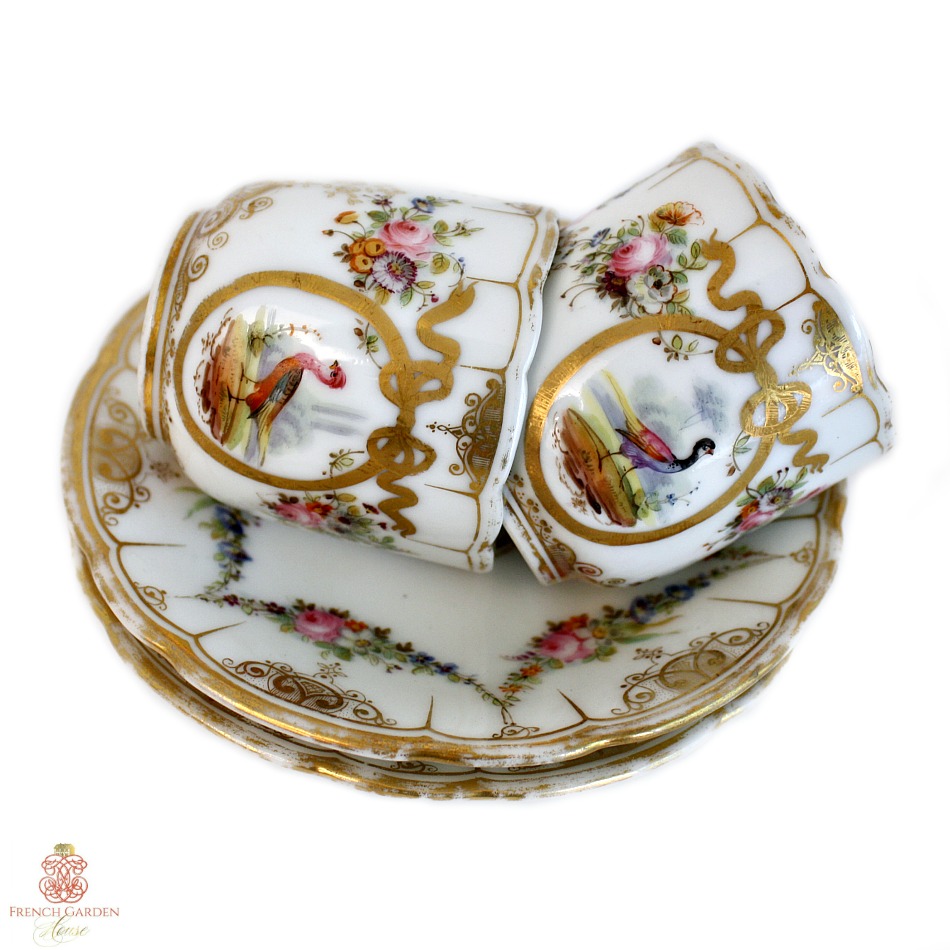 Antique French Hand Painted Demitasse Cups
Antique French Hand Painted Demitasse Cups

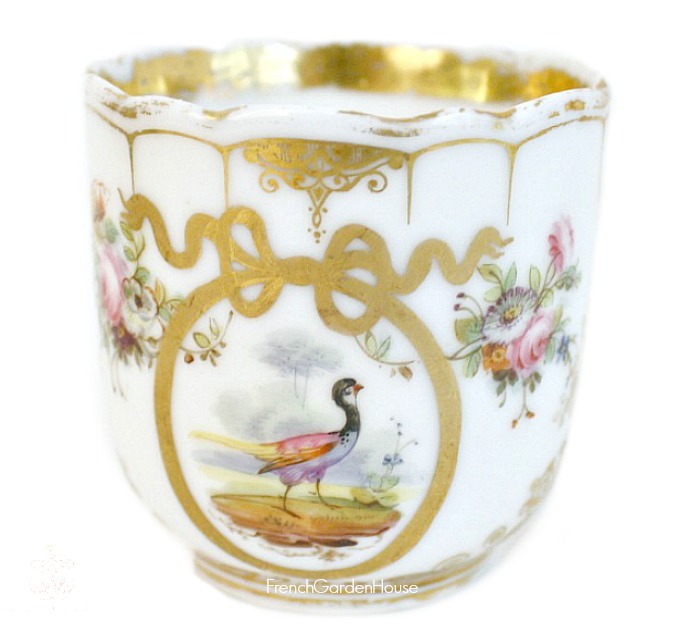
Obviously, in the French country homes all over France, coffee making and coffee drinking was not as elegant, but no less delicious. A simple enamelware coffee maker was used, called a biggin, these have a filter inside to hold the coffee grounds. Today, most French Country aficionados use these for display only.
A biggin is usually a three or four part coffee pot, the filter sits on the top of the pot, under the lid. The white pot below has just three parts, a pot, a filter top, and a lid.
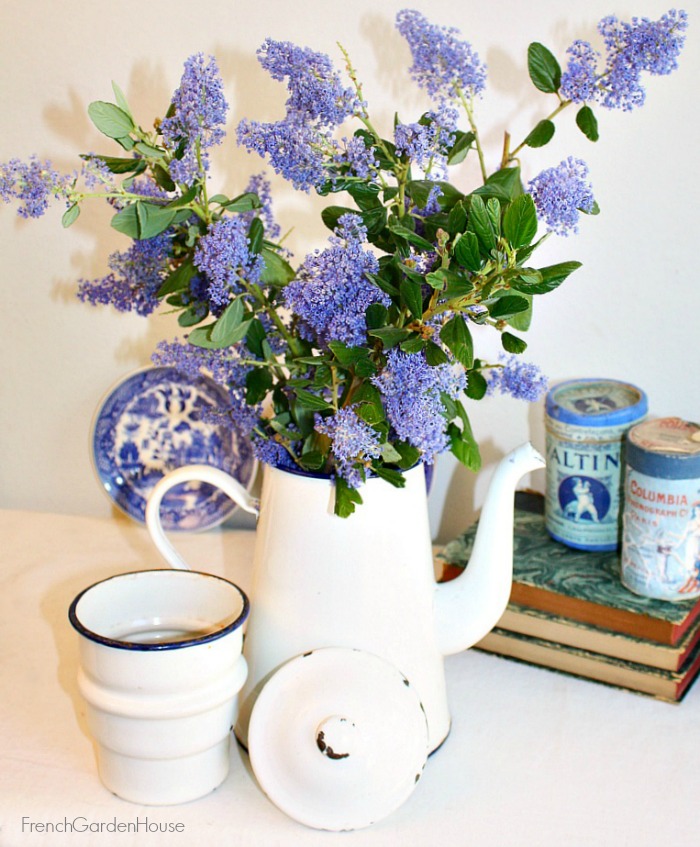
This one has four parts. It has the usual pot, filter “cone” lid, but then also a second filter that fits into the cone filter.
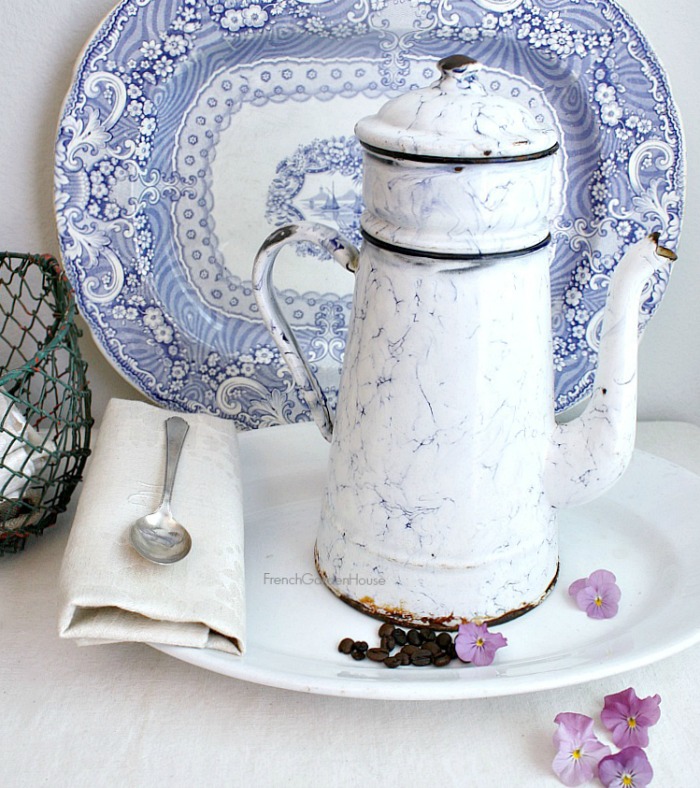
Antique French Swirl Enamel Biggin
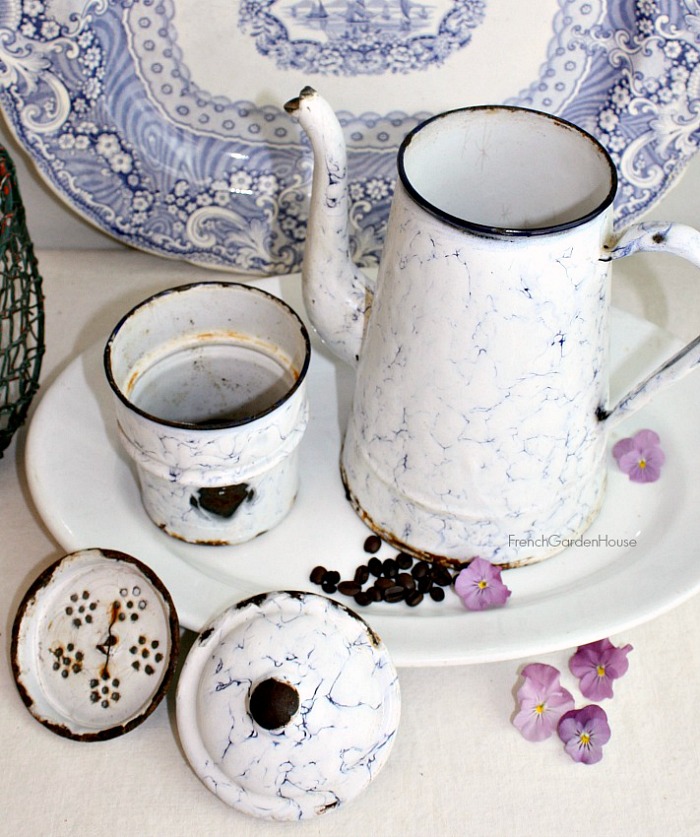
So, how do you make coffee in those three part enamelware coffee pots? I’ve had some of you ask, either in blog posts, or emails or on Instagram, so here you go: it’s easy!
Here are the steps to make coffee in a French enamelware Biggin:
1. Boil water.
2. Rinse out the coffee pot with hot water.
3. Put the filter on the top of the pot, and add ground coffee.
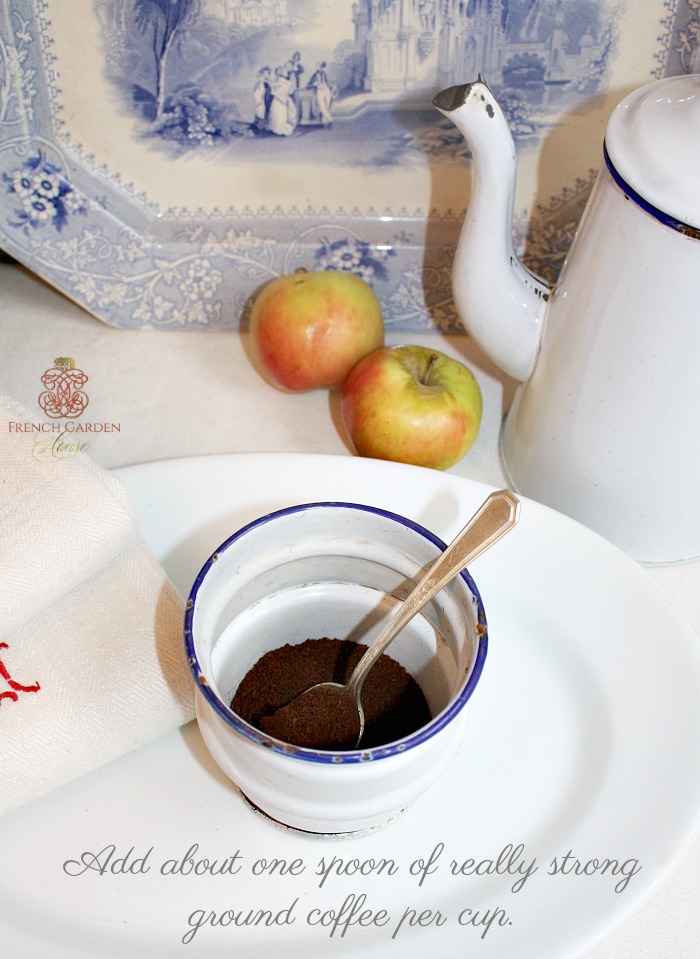
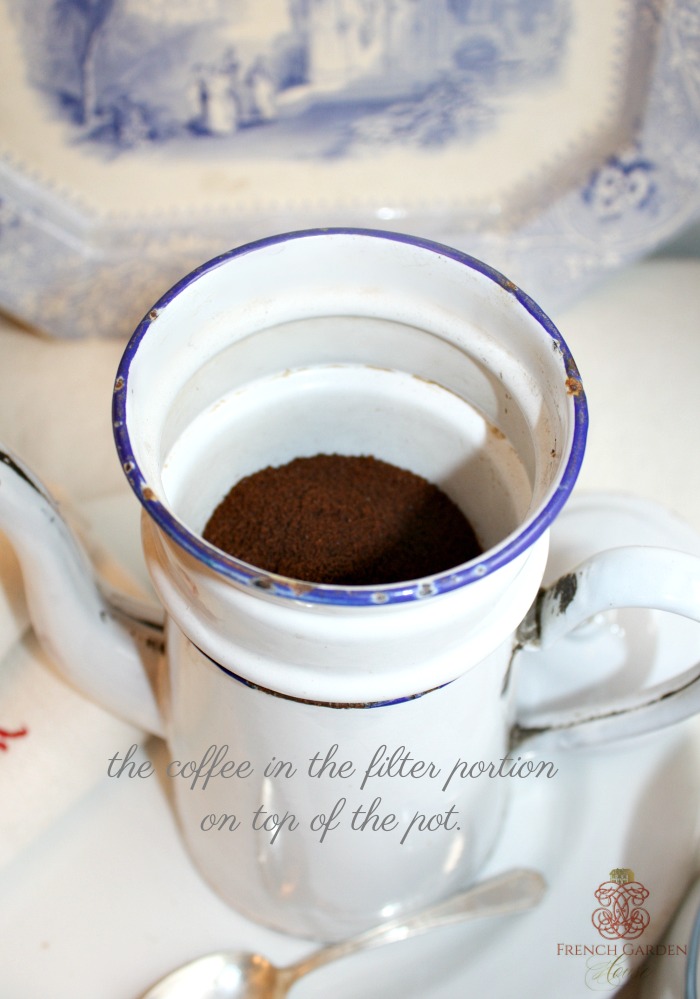
4. Pour just enough hot water on the coffee grounds in filter to get them wet.
This will saturate the coffee and bring out the best possible flavor.
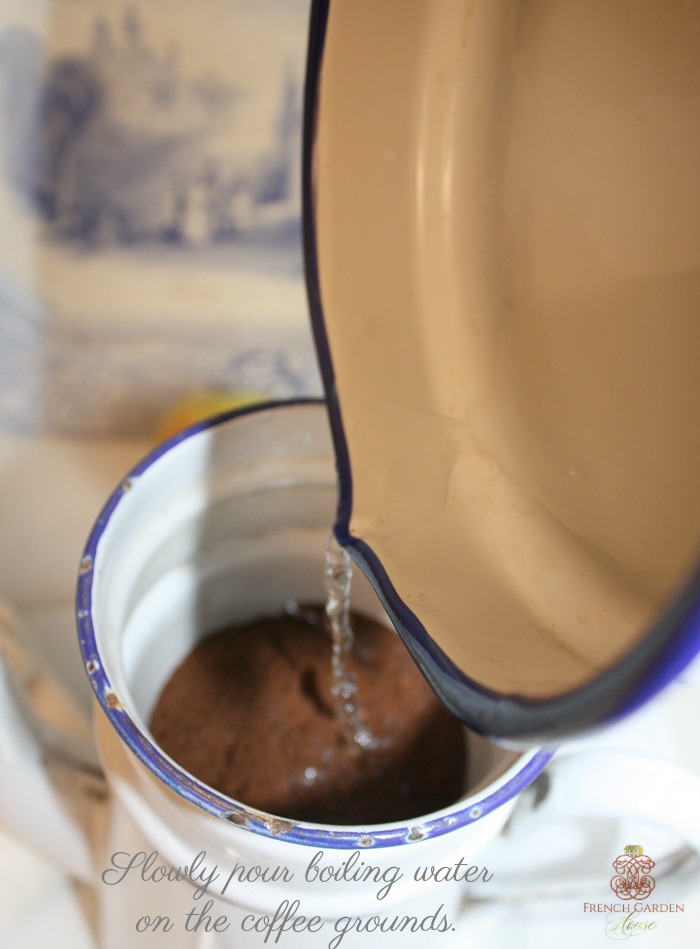
5. Slowly pour in more hot water, it will drip into the coffee pot part.
Continue slowly pouring in all the hot water and let it drip all the way through the filter portion. When you are done {be sure to figure out how much your pot will hold!} take the filter part off, put the lid on pot, and enjoy the coffee!
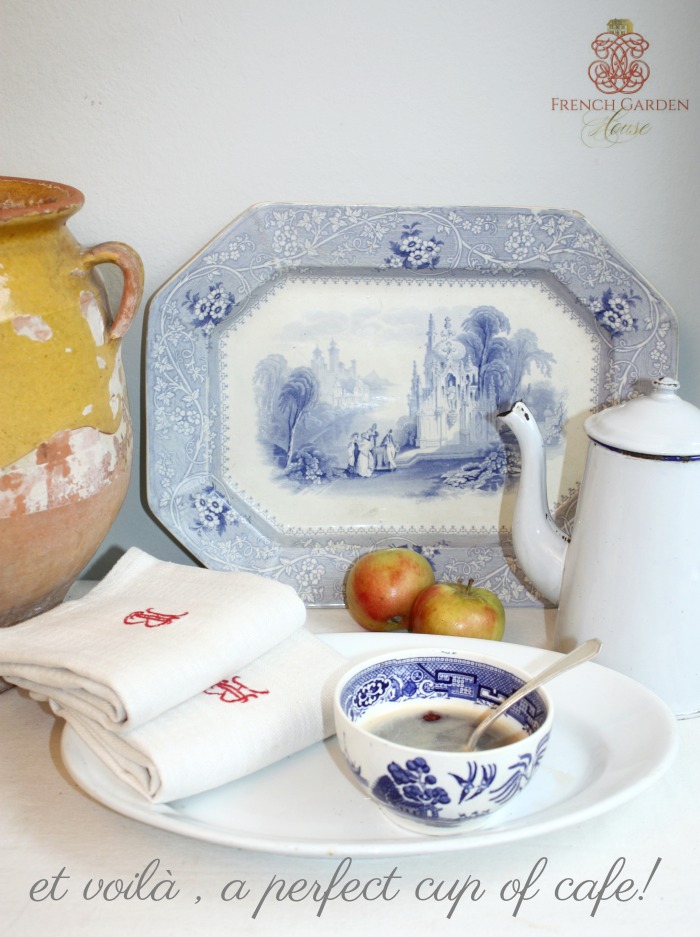
There have been many ways to make coffee over the centuries, the simplest is still using an enamelware biggin, a two-part coffeepot with a built in filter.
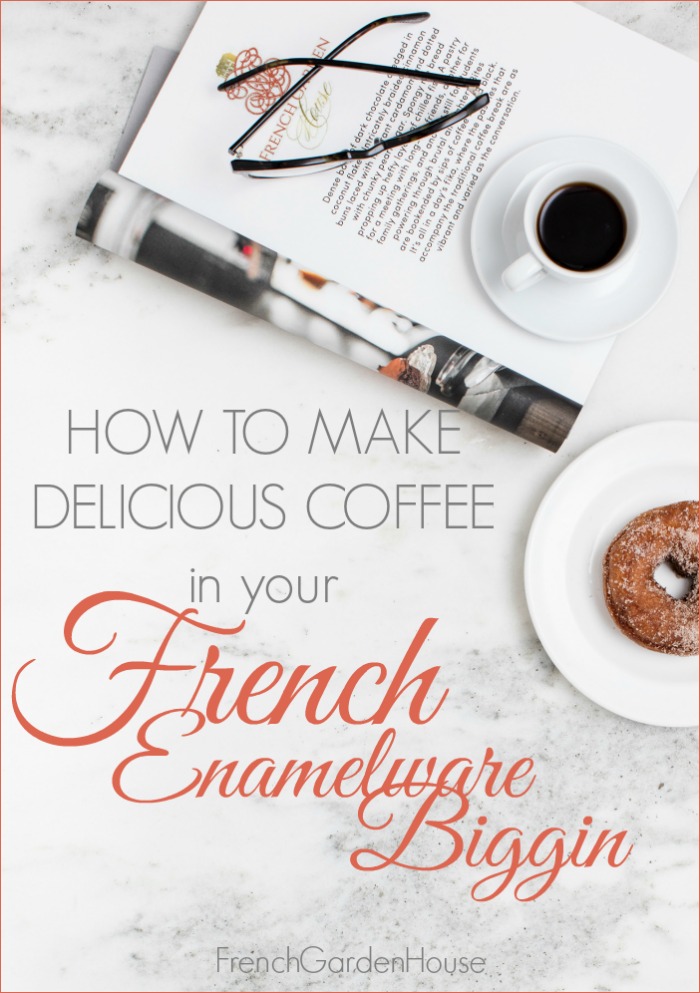
à bientôt

Shop for the best in French Antiques, furniture with the patina of age, vintage accessories to delight you and your family & friends, and French Country utilitarian pieces. Treasures that make your home fresh, beautiful, inspirational and uniquely yours. Visit our shop FrenchGardenHouse.com

 Your Cart
Your Cart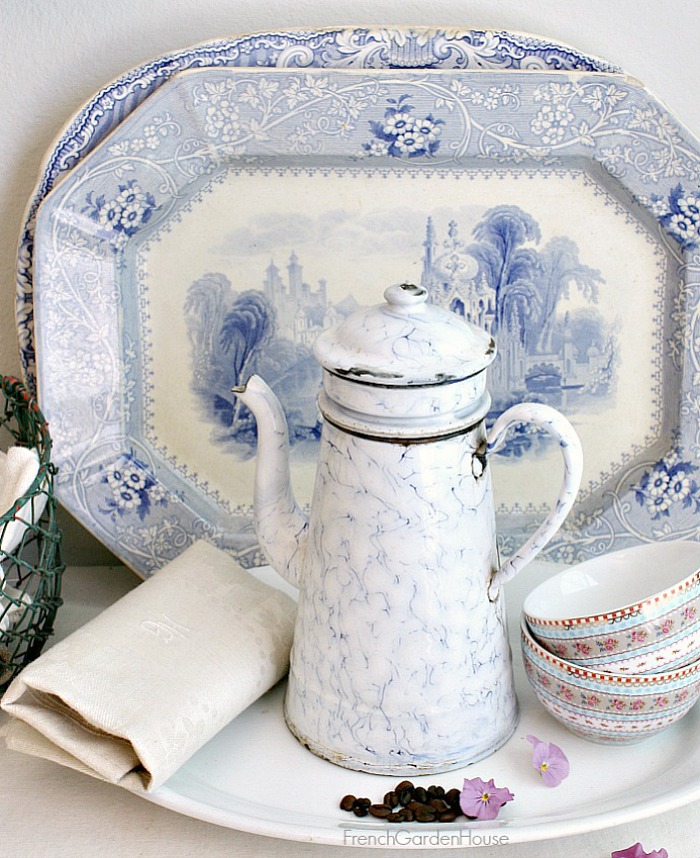
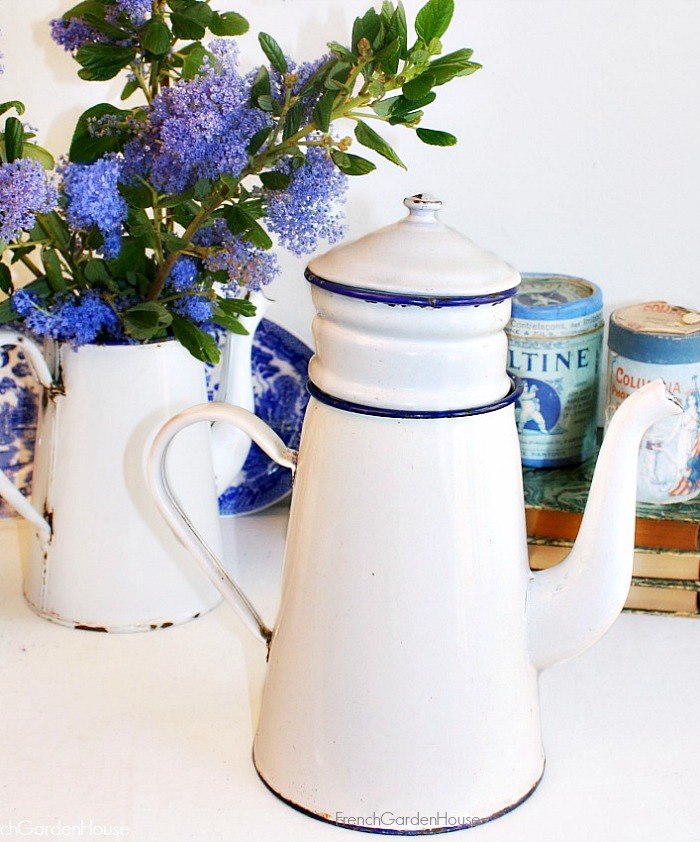
This is the method used by my grandmother. She didn’t have one of those wonderful Biggins. She used a tall “drip” coffee pot. My grandfather was French, from Louisiana, and this is the way his people brewed their coffee so she adopted their method. I still have her pot and use it when we’re camping. I love brewing coffee this way…maybe I should do it at home all the time and be reminded of my grandparents. Maybe it’s the French in me but I agree that a cup of coffee is something to sit and enjoy, not grab on the run.
Vicky, I love your memories of your grandmother and her coffee making! It would be fun, on a special day when you have time to savor it, or when you have a friend over, to make coffee in your special pot, wouldn’t it? It would rekindle all your sweet memories of your grandparents. This is what old, antique pieces bring to our everyday world, the memories! Love thinking of you thinking of them when you use her pot. xo
Lidy, so today using a French press coffee pot makes delicious coffee. Is that similar to the coffee you would make in the biggin? I love the French press coffee using strong coffee but because of a health issue I now use half acid coffee. My mother would boil her water, put in the coffee grounds then pour in cold water, let the grounds settle, reheat the coffee but not let it boil, then pour into the cups. It also was delicious coffee. Does anyone remember others doing that?
Love this article! I bought a glass french coffee press with the plunger but I’ve been dissatisfied with the strength–I figure I am doing it wrong because it is weak as tea. Maybe I am making it wrong. I even bought dark roast French coffee. Any more tips?
Julie, make sure that you are using enough coffee first of all. Then, after adding the boiling water, the trick is to press the plunger down really slowly, but first let the coffee “sit” in the hot water a minute. It should make really strong coffee for you. I love my French press!
Good luck!
Lidy
Dear Lidy, thank you for your charming post today. I loved reading it while I was drinking my morning coffee. It was a delightful start to my day! Have a great one!
xoxo Jo
Thank you Jo! Coffee is more than a drink, isn’t it? It’s mornings savoring a cup before starting the day, it’s memories of family and friends, it’s well, it’s a part of our world I for one wouldn’t want to miss. Have a wonderful day, dear friend.
Oh I am a coffee lover and love this post!….I now see why I was taught to just pour a little bit of hot water over the grounds and wait a minute before I poured the rest of the water into the French coffee press….thank you for the lesson on how the French enjoyed/enjoy their coffee and the beautiful images of the Limoges. I love the idea of coffee and dessert first!….When I was with my mom in Japan, they served us tea and a little sweet before our meal too!….Now we have it so backwards here! I vote dessert first!
P.S. It’s the middle of the afternoon here and this post just made me get up and make myself a cup of coffee! Wish I could have one with you!! Have a fabulous day!!!
Hi Lidy, thanks so much for this great post. I loved it (and coffee!). Lots of good information. I’ve also wondered how the French press works (future post?). Hugs, Pat
Hi, Lidy,
Well I love those coffee pot’s and if they could talk, what stories they would tell, all the blue makes you want a cup of coffee in one of the pretty cup’s and saucer. I AM ENJOYING MY BOOK, THANK YOU~Happy Memorial Day and a good weekend~~~~~
Jean, so happy you receive Kristy’s book and are enjoying reading it!!
Hi Lidy,
Wonderful to see all those lovely old pieces of French enamelware, and the beautiful coffee cups!! Like you, I love browsing French fleamarkets – it’s just amazing what one can find sometimes!!
The French drink their ‘cafe au lait’ in bowls only in the morning for breakfast. The rest of the day it will be simply ‘cafe’, in an espresso-sized cup, a ‘grand creme’ similar to cappuccino, or a ‘noisette’, a shot of espresso with a tiny dash of milk.
I’ve not yet come across the coffee in the evening as the start of an evening party here in my area of France, but people do invite for coffee after they have had their evening meal (quite often taken at 7pm), and they might serve something like sparkling wine or a digestif later on. Whatever the occasion, it’s always convivial here in France!!
What is the second filter used for. I have a similar pot but could not decide the use for the second filter
Diane, if it is the tiny one with a little handle, I believe that is used to press down and keep down the ground coffee when pouring water on the coffee. So it doesn’t float up.
I have one of my grand moms. It though has two additional filters that seem to fit inside. Would of the filter that sits on top. One is concave and the other convex. 5 pieces total. Would you be able to tell me how the two internal ones are to be used?
I have the same! And can’t figure how to use it!
OK so if I’m reading this right you need 2 pots, one to boil water in and then the Biggin pot. Once the water from the second pot boils you pour the water over the ground in the basket of the Biggin pot?
Jennifer, yes, you want to add boiling water to the biggin with the coffee in the filter part so that the hot water “drips” into the bottom.
I have just bought a French “biggin” – not a word we use in the UK!
It has 4 parts – like the one in the article – but what is the purpose of the top “filter” (the one with the large holes)?
I am assuming that you don’t put coffee in that, but, if not, what purpose does it serve?
Cordialement.
Mike
I don’t drink coffee, yet I’m from New Orleans!!! (Go figure). I have a ‘biggin” and am making cafe au last for Thanksgiving coffee. I have Cafe du Monde coffee…looking forward to this! 🙂
I have memories of my Godfather (who spent a lot of his youth in Paris), using a Biggin. However he had a pair of Biggin pots (shaped like teapots) and when the water was finished filtering through into the first pot, he would transfer the filter, with its damp grounds still inside, over to the second pot and slowly pour the coffee from pot number one back through into pot number two. He would do this slowly several more times and ended up with extremely strong coffee which became the ‘master brew’ – original instant coffee. You poured some concentrate into your coffee cup and added boiling water to taste. He learned this method from the family he lived with in Paris in the 1930s